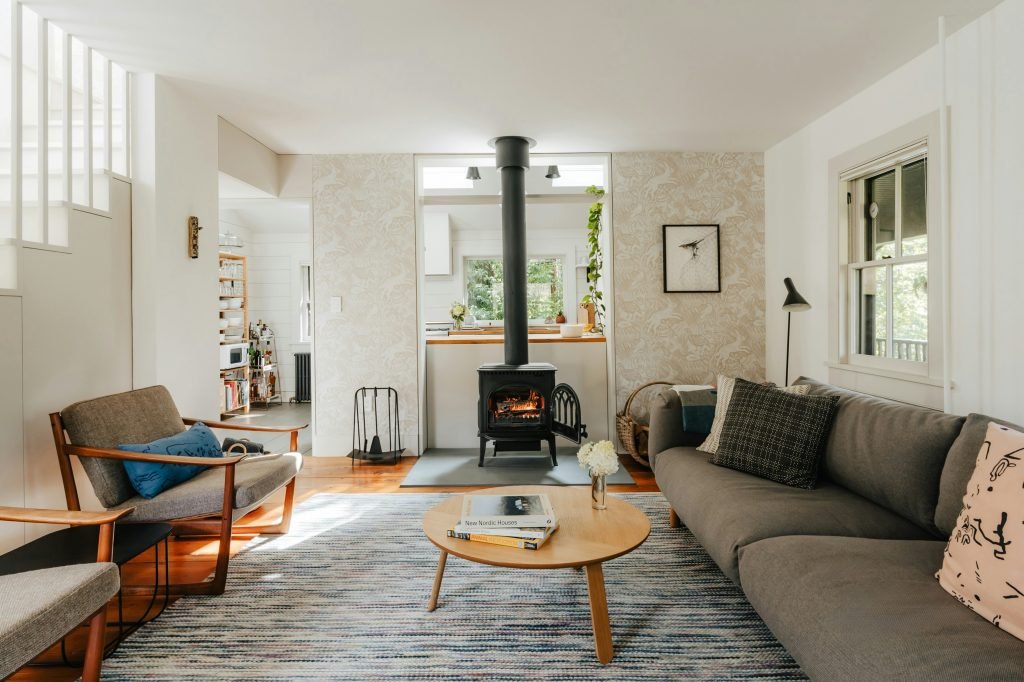Have you ever wondered about the appeal of open floor plans in homes? You’re not alone. In recent years, open floor plans have become a popular choice for homeowners and architects alike. This design trend often symbolizes modernity and spaciousness, but it’s essential to weigh the pros and cons before making any decisions for your living space.
Understanding Open Floor Plans
An open floor plan refers to a design concept where the main living areas—typically the kitchen, dining room, and living room—are combined into one large, open space without interior walls. This layout is especially common in modern homes and renovations, as it promotes a sense of spaciousness and fluidity in the living environment.
By connecting these spaces, it creates a more social atmosphere and allows for easier movement throughout the home. However, it also comes with its set of challenges that can impact your daily life and overall satisfaction with your home.

This image is property of images.unsplash.com.
The Pros of Open Floor Plans
Enhanced Social Interaction
One of the most significant benefits of an open floor plan is the enhanced social interaction it encourages. Imagine cooking in the kitchen while still being able to engage with family or friends in the living area. This layout fosters connections and helps create a more inclusive environment.
Natural Light And Ventilation
Open floor plans often allow for increased natural light to flood the space. The absence of walls means that sunlight can travel freely throughout the home, making it feel brighter and more inviting. Additionally, good ventilation is typically easier to achieve in these designs, contributing to a more comfortable living environment.
Flexibility In Usage
With an open floor plan, you have the flexibility to use the space in various ways. Want to rearrange the furniture to create a cozy reading nook or to host a party? No problem! The open layout allows you to adapt your space to fit your needs, whether for casual living or special occasions.
A Modern Aesthetic
Open floor plans frequently come with a modern aesthetic that appeals to many homeowners. The clean lines and seamless transitions between spaces create a contemporary feel that many find attractive. This design often aligns well with minimalistic decor, which is a popular choice in today’s home trends.
The Cons of Open Floor Plans
A Lack of Privacy
While the openness offers benefits, it can also lead to a significant drawback: a lack of privacy. When your living spaces are connected, it becomes challenging to find solitude. If you have guests over or family members engaging in activities, you may find it hard to focus or seek quiet time.
Noise Levels
Another drawback to an open floor plan is the potential for increased noise levels. Without walls to contain sound, conversations, music, or even cooking sounds can travel and disrupt peace. This can be particularly troublesome if you or your family members have varying schedules or activities.
A Challenge for Furniture Arrangement
Arranging furniture in an open space can be more challenging than in a traditional room layout. You might find it difficult to create distinct zones, which can lead to a cluttered appearance if not done carefully. It requires strategic planning to ensure the space feels organized and functional while remaining visually appealing.
Cleaning and Maintenance
With an open floor plan, there’s often more space to clean and maintain, which could become a chore for some. Dust and debris can accumulate in hard-to-reach corners, particularly if your living area includes high ceilings. The openness also means more floorspace—think easy-to-track-in dirt.
Evaluating Your Needs
Before deciding whether an open floor plan is right for you, it’s crucial to evaluate your specific needs and lifestyle. Consider your preferences regarding how you interact with family members or guests, your sensitivity to noise, and how much privacy you desire in your home.
Popular Trends in Open Floor Plans
Functional Zones
One trend in open floor designs is the creation of functional zones within the space. You can do this by using rugs or different furniture arrangements to define areas. For instance, a cozy area rug can visually separate the living room from the dining area while still allowing for that open feeling.
Integrated Technology
Technology integration has significantly influenced open floor plans. Smart home devices can simplify everyday tasks and contribute to a more seamless experience. Imagine controlling lighting or temperature through an app, enhancing comfort across your open space.
Multipurpose Furniture
Multipurpose furniture is becoming increasingly popular in open-concept designs. Pieces like foldable tables, extendable chairs, or storage ottomans can help optimize limited space while maintaining an uncluttered look. This flexibility is especially beneficial in urban homes or smaller living spaces.

This image is property of images.unsplash.com.
Factors to Consider When Choosing an Open Floor Plan
Family Dynamics
Your family’s dynamics play a crucial role in deciding if an open floor plan suits you. For large families or those who thrive on social interactions, the open layout may be fantastic. Conversely, if your family values privacy and quiet time, you may want to consider traditional layouts.
Lifestyle and Activities
Are you someone who enjoys entertaining guests or hosting parties? An open floor plan could be ideal, as it creates a welcoming atmosphere. However, if you tend to enjoy quieter evenings or focused activities, you might want to reflect on the potential downsides of an open concept.
Future Needs
Consider your long-term needs. If you plan on growing your family, think about whether the layout will still serve you well down the line. Open floor plans can be challenging for families with young children or those needing designated spaces for various activities.
Making the Most of an Open Floor Plan
If you decide to embrace an open floor plan, it’s essential to create a space that works for you. Here are some tips to make the most out of your layout:
Define Areas with Decor
You can utilize various decor elements to visually differentiate areas within your open design. Think about using different paint colors or wallpaper styles to define boundaries, even if they don’t physically separate the spaces.
Use Furniture to Create Flow
Arranging furniture in a way that encourages flow is vital in an open floor plan. Choose pieces that complement each other and guide movement through the space, making sure to leave open pathways for easy navigation.
Embrace Natural Elements
Integrating natural elements such as plants can bring warmth to your open spaces. They serve as beautiful decorators while improving indoor air quality, making your environment feel more inviting and lively.
Invest in Storage Solutions
With open layouts tending to have more visible surfaces, investing in smart storage solutions can keep your space organized. Consider utilizing built-in shelves, cabinets, or creative storage furniture to help manage clutter and maintain a clean aesthetic.

This image is property of images.unsplash.com.
Real-Life Experiences
Understanding others’ experiences can guide you in determining whether an open floor plan is suitable for you. Many homeowners appreciate the spaciousness and light that this layout offers but also express challenges in maintaining quiet moments or managing noise levels.
A Case Study: The Smith Family
The Smith family lives in a beautifully designed open-concept home. They love the abundance of space and how their kids can play in the living area while they prepare dinner. However, they’ve found that keeping noise levels down during family movie nights is a challenge, and they are now considering creating designated quiet zones.
A Case Study: The Johnsons
On the other hand, the Johnsons opted for a traditional home layout. They prioritize privacy because they often work from home. They enjoy closed-off spaces that allow for focused work, which ultimately benefits their productivity and family dynamics.
Conclusion
Deciding whether an open floor plan fits your lifestyle requires careful consideration. Weighing the pros and cons while reflecting on your personal preferences will guide you towards the best decision for your home.
The friendly interaction, natural light, and modern appeal of open floor plans are undoubtedly attractive, but challenges like noise levels, lack of privacy, and maintenance should also be at the forefront of your mind.
Ultimately, understanding your needs and evaluating how an open floor plan aligns with your lifestyle will provide you with the insight you need to create a functional and enjoyable living environment. Whether you choose an open concept or a more traditional layout, the key is to design a space that feels like home to you.


